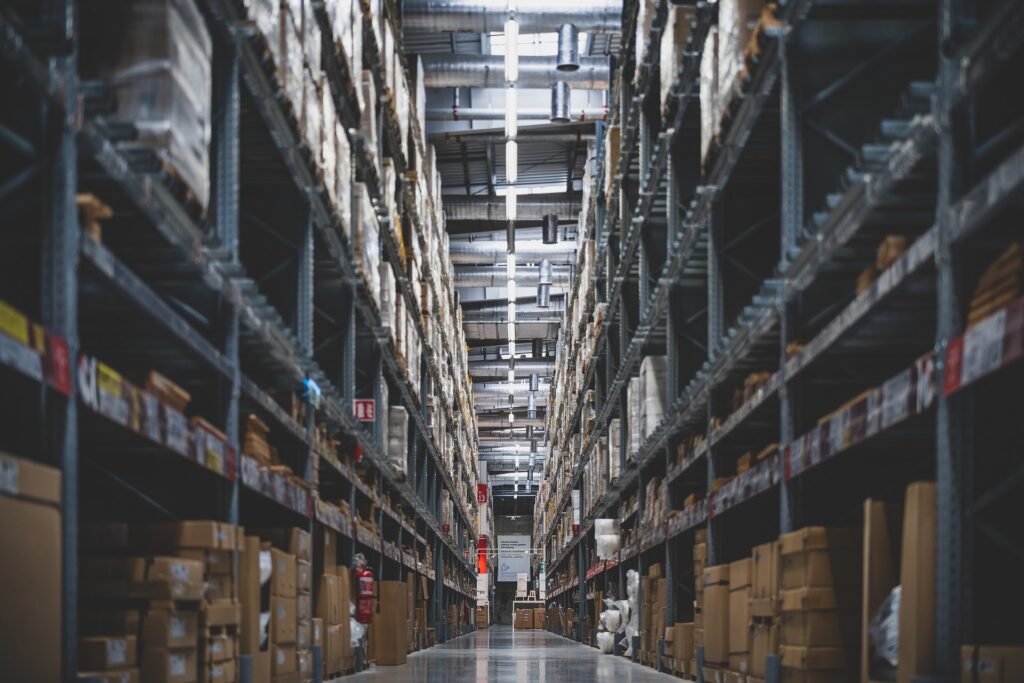Most e-commerce businesses with warehouse operations have a goal of maximizing the process of productivity by reducing waste, which entails resources and time, automating processes, and optimizing workflows. As business grows, it is paramount to consider whether the warehouse processes and systems meet your needs.
When your warehouse is not organized properly, regardless of the delivery, ordering, and supply chain operating perfectly, everything can quickly take a negative turn.
There are so many intricated processes with many functions and moving parts happening simultaneously in warehouses. Such complex processes make the warehouse a vast area that requires improvement for better productivity, which is not always easy.
Various ways can help you transform your warehouse into a structured and systematic space to avoid decreased profits and client dissatisfaction and improve your brand awareness. To help you boost your efficiency, we have compiled 7 tips to help you run everything smoothly.
1. Zone your Warehouse
The layout of your warehouse plays a significant role in managing warehouse efficiency; therefore, one must work out and achieve the best layout that meets their specific requirements.
In the context of an optimized layout, consider incorporating top-quality Belt conveyors for goods movement. The use of conveyors expedites operations and reduces the risk of human error.
Organize your products into particular zones, categories, and bin types. If you have many products, you can set up various zones for various products ordered regularly for faster picking. Create clear zones for the receiving stock once you have established how your warehouse connects various areas.
Depending on the criteria you have used to zone your warehouse, you can choose various picking methods.

2. Develop a Barcode Scanning
When you set up a barcode with a stock-keeping unit on all your goods, it becomes straightforward to reduce warehouse errors and identify the inventory. You can also use these barcodes to identify particular containers or racks in your warehouse, making transferring inventory within specific areas easier.
Ensure you audit all available products and put them in different categories first. You can then proceed and add additional details within each group. After that, you must find a way to print and generate barcodes with a scanner and decode the information for every barcode.
When you finish setting up this barcode system and it is running, you will have an easier time monitoring your inventory, which allows for true traceability and reduces errors in packing.
3. Improve the Supply Chain Processes
Tracking your inventory to run an efficient warehouse and have a solid supply chain is essential. Keeping your warehouse stocked all the time will help you minimize the supply chain challenges that are affecting many e-commerce businesses.
Consider including demand forecasting as well as historical sales to be able to know the items you need to meet the demand in the future.
Alternatively, you could consider diversifying the supply chain by including more suppliers of key products. This helps you to have an option of keeping items in stock at optimal levels in case of backorders.
Improving your supply chain makes you deliver fast and meet your client’s expectations since customers these days demand fast orders and convenience.
4. Set up a Digital Picklist
Many human errors are prone to happen in the warehouse, and technology is here to help minimize these errors by assisting individuals in picking the orders they require quickly. By introducing a digital picklist, clients and employees can quickly identify whatever they need on the digital device by flipping through several lists.
While setting up the digital picklist, remember to include a photo of the product to help reduce returns or errors and the picking speed when a product is picked incorrectly.
You can use order grouping to group the picklists’ single orders followed by multi-item goods. Or you can use item grouping, group them by specific items, and sort them using a specific sequence of bin racks.
5. Improve Management and Leadership
The beginning of warehouse improvement starts with hiring quality people. You must invest in quality training processes to keep your staff on track and help them grow. You can avoid costly accidents in the future when you prioritize training now.
You should be able to foster the development of capable leaders at the forefront, enabling you to plan, monitor, and manage every aspect of fulfillment. Such leaders help employees develop their skills, and they can easily recognize and address new problems.
When you have improved order management and leadership, you can establish a warehouse culture that is fun, creative, and interesting, which promotes productivity.
You can listen to your employees through leaders and get valuable insights on productivity-slowing issues and other process shortcomings.
6. Follow the FIFO Inventory Method
The easiest and most successful way of managing your inventory and supply chain in the warehouse is using the FIFO method. With the FIFO management approach, you can maximize your profits, decrease the inflation impact, and reduce the wastage of products.
One can quickly develop a FIFO system through warehouse stocking depending on the batch numbers to allow the separation of multiple items in various batches.
This method is suitable for every business, but it is best for most firms with seasonal inventory like soft turnings, clothing, or products with expiry dates. One can decide to ensure that products sell by dates to sell all the products expiring within the next couple of months.
7. Expand Storage Capacity
One of the biggest problems in many warehouses is congestion. Congestion leads to much extra work since you move products you do not have room for. It is very important to maximize your warehouse capacity if you want to gain more efficiency. There are many ways to expand your capacity without buying more floor space.
If you have a picking warehouse, consider installing mezzanines to help you add levels to the facility. One can also consider developing carton flow racks, which will extend the storage depth and streamline product picking.
Alternatively, consider other options that help boost pallet storage capacity, like the Pallet shuttle system, drive-in pallet racks, and mobile racking system.
Bottomline
If you are running an e-commerce business, it is vital to determine and find ways to grow and run your business smoothly.
The most crucial way is boosting the efficiency of your warehouse, which can be done through several ways discussed in this article. Whether organizing an existing warehouse or moving to a new location, managing your warehouse will help you reduce time and create an efficient, structured pace for your business.




